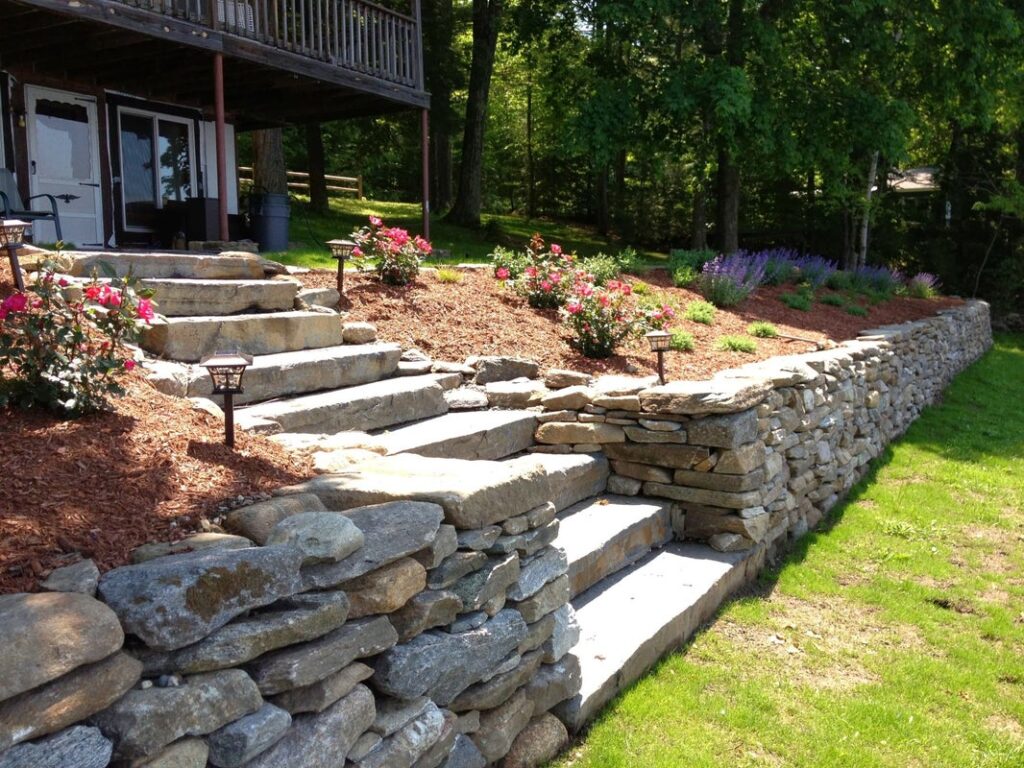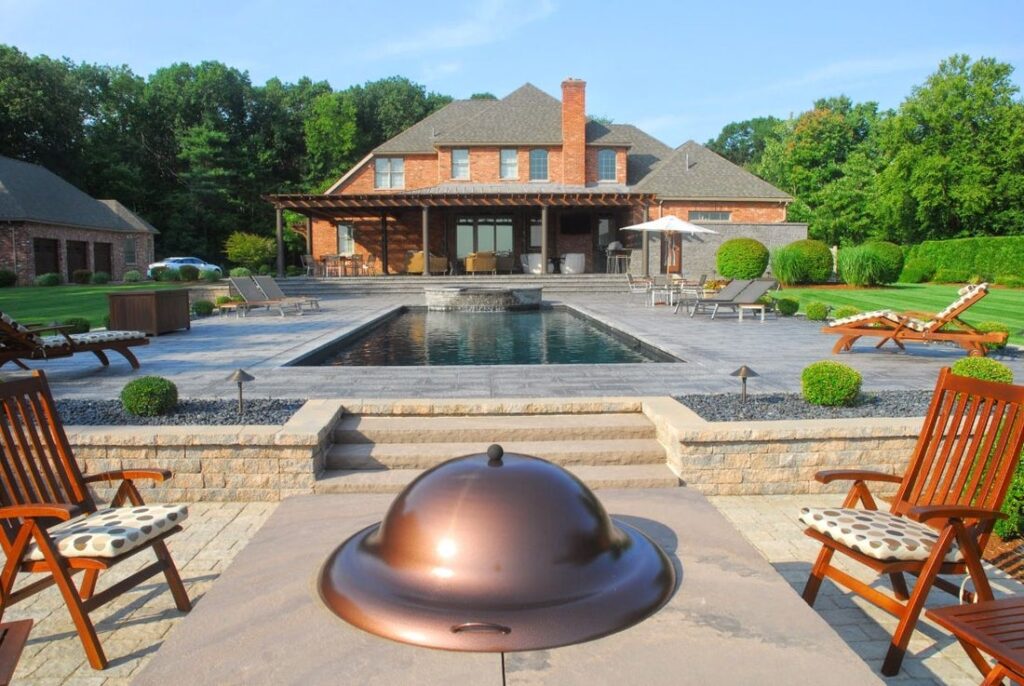Landscape design in Yarmouth, MA presents unique challenges due to the coastal climate and environment.
To create a thriving garden that can withstand salt exposure, strong winds, and variable weather conditions, it’s essential to approach landscape design strategically in this beautiful Cape Cod town.
Best Plants for a Coastal Garden in Yarmouth, MA
When selecting plants for your Yarmouth landscape design, choose species that are resilient and well-adapted to the coastal conditions.
Native plants are an excellent choice, as they have evolved to thrive in the local environment and require less maintenance than non-native alternatives.
| Plant Type | Characteristics | Examples |
|---|---|---|
| Native Grasses | Drought-tolerant, salt-resistant | Little Bluestem, Switchgrass |
| Coastal Shrubs | Wind-resistant, low-maintenance | Bayberry, Beach Plum |
| Succulents | Drought-tolerant, unique textures | Sedum, Hen and Chicks |

Incorporating a mix of these plant types will create a visually appealing, low-maintenance garden that can withstand the challenges of Yarmouth’s coastal environment.
How to Use Native Plants for Sustainability in Yarmouth’s Landscape Design
Native plants offer numerous benefits for sustainable landscape design in Yarmouth.
These species are naturally adapted to the local climate and soil conditions, requiring fewer resources and less maintenance than non-native plants.
- Native plants support local biodiversity by providing food and shelter for pollinators, birds, and other wildlife.
- They require less water, fertilizer, and pesticides, reducing the environmental impact of your landscape.
- Native plants promote healthier soil by maintaining the natural balance of nutrients and microorganisms.
Some popular native plants for Yarmouth landscapes include:
- Bearberry (Arctostaphylos uva-ursi)
- New England Aster (Symphyotrichum novae-angliae)
- Northern Bayberry (Myrica pensylvanica)
- Eastern Red Cedar (Juniperus virginiana)
Common Mistakes to Avoid in Yarmouth Landscape Design
To ensure the long-term success of your Yarmouth landscape, avoid these common design mistakes:
| Mistake | Consequence | Solution |
|---|---|---|
| Overplanting | Crowded, unhealthy plants | Allow adequate space for growth |
| Poor plant placement | Unsuitable growing conditions | Consider sun, shade, and soil needs |
| Ignoring soil conditions | Nutrient deficiencies, poor drainage | Amend soil based on plant requirements |
- Assess your site’s unique conditions, including sun exposure, soil type, and drainage.
- Choose plants that are well-suited to these conditions to minimize maintenance and ensure their health.
- Provide adequate space for plants to grow and mature, avoiding overcrowding.
Choosing a Landscape Design That Complements Cape Cod Homes
When designing your Yarmouth landscape, consider elements that complement the iconic Cape Cod architectural style.
Traditional Cape Cod homes feature simple, symmetrical designs with weathered shingles, white trim, and shuttered windows.
To create a cohesive and visually appealing exterior:
- Use natural materials like stone and wood that reflect the coastal environment.
- Incorporate colors that complement the home’s exterior, such as soft blues, greens, and neutral tones.
- Select plantings that provide texture and interest without overpowering the architecture.
- Maintain a sense of simplicity and balance in your design, echoing the clean lines of Cape Cod style.
Why a Sustainable, Native-Focused Garden is Important for Yarmouth Homeowners
Prioritizing sustainability and native species in your Yarmouth landscape design offers numerous long-term benefits for both your property and the environment.
| Benefit | Explanation | Impact |
|---|---|---|
| Environmental stewardship | Native plants support local ecosystem | Preserve biodiversity, attract pollinators |
| Resource conservation | Reduced water, fertilizer, and maintenance needs | Lower environmental impact and costs |
| Enhanced property value | Sustainable, low-maintenance landscapes are desirable | Increased curb appeal and resale value |
By creating a thriving, eco-friendly garden that works in harmony with the coastal environment, you can contribute to the preservation of the unique Cape Cod ecosystem while enjoying a beautiful, low-maintenance outdoor space.

Why We Think This Is Important
At Plan It Green Landscape Architecture, we believe that creating a thriving coastal garden in Yarmouth, MA is essential for the health and beauty of our unique environment.
By following these five tips and prioritizing sustainability, native species, and thoughtful design, you can create an outdoor space that enhances your property value, supports local biodiversity, and provides a beautiful, low-maintenance oasis for you and your family to enjoy for years to come.
Our team of experienced landscape architects is dedicated to helping Yarmouth homeowners create sustainable, resilient, and visually stunning gardens that celebrate the natural beauty of Cape Cod.
FAQs
What plants are best suited for Yarmouth’s coastal climate?
Native plants like bearberry, bayberry, and Eastern red cedar are well-adapted to Yarmouth’s coastal conditions, offering drought tolerance, salt resistance, and wind resilience.
How can I incorporate native species into my landscape design?
Research native plants that thrive in Yarmouth’s climate and soil, and choose species that complement your design aesthetic. Incorporate them into planting beds, borders, and focal points throughout your landscape.
What are the most common challenges when designing landscapes in Yarmouth, MA?
Common challenges include salt exposure, strong winds, variable weather conditions, and sandy soils. Choosing resilient plants, providing proper drainage, and using organic matter to improve soil structure can help overcome these obstacles.
How can I create a sustainable landscape in Yarmouth?
Prioritize native plants, reduce lawn area, use organic maintenance practices, and incorporate features like rain gardens and permeable pavers to minimize environmental impact and conserve resources.
What types of landscape designs complement Cape Cod architecture?
Designs that feature natural materials, coastal-inspired colors, and low-maintenance plantings can beautifully complement traditional Cape Cod homes. Aim for simplicity, symmetry, and a connection to the surrounding environment.

